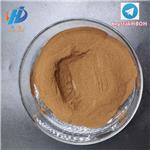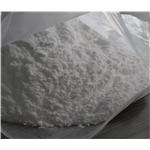- Linuron
-

- $75.00 / 50mg
-
2024-10-24
- CAS:330-55-2
- Min. Order:
- Purity:
- Supply Ability: 10g
- Linuron
-

- $1.00 / 1KG
-
2024-04-22
- CAS:330-55-2
- Min. Order: 1KG
- Purity: 99.91%
- Supply Ability: 200000
- Linuron
-

- $20.00 / 1kg
-
2023-08-05
- CAS:330-55-2
- Min. Order: 1kg
- Purity: 99.99%
- Supply Ability: 50000tons
|
| | Linuron Basic information |
| | Linuron Chemical Properties |
| | Linuron Usage And Synthesis |
| Description | Linuron is found as white crystals that have no smell. It is very
slightly soluble in water. Linuron can enter the body either by
ingestion of contaminated food or water or by dermal contact.
Linuron can cause nausea, vomiting, and diarrhea. Eye contact
can cause irritation. There is little evidence available as to the
effects of exposure to linuron on human health. However,
exposure to linuron at normal background levels is unlikely to
have any adverse effect on human health. | | Chemical Properties | White crystalline solid or powder. Odorless.
Commercial product may be available a water soluble or
emulsifiable concentrate. | | Uses | Linuron is used to control annual and perennial broadleaf and
grassy weeds on crop and noncrop sites. It is used as a pre- and
post-emergent herbicide. It works by inhibiting photosynthesis
in target weed plants. It is used in soybean, cotton, potato, corn,
bean, pea, winter wheat, asparagus, carrot, and fruit crops. It is
also used on crops stored in warehouses and storerooms.
Linuron is classified by the US Environmental Protection
Agency (EPA) as a Restricted Use Pesticide (RUP). | | Uses | Selective preemergence and postemergence herbicide used on a wide variety of food
crops to control many annual broad-leaved and grass weeds. | | Uses | Selective pre- and post-emergence herbicide. A restricted use pesticide. | | Definition | ChEBI: A member of the class of ureas that is N-methyl urea substituted by a methoxy group at position 1 and a 3,4-dichlorophenyl group at position 3. | | General Description | Colorless crystals. Non corrosive. Used as an herbicide. | | Air & Water Reactions | Hydrolyzed slowly by acids and bases. | | Reactivity Profile | A urea derivative. | | Health Hazard | Lowtomoderatelytoxicbyingestion—LD50varying with experimental animals; 4-hourexposure to its vapors at 48 mg/m3 was lethalto rats; toxic properties similar to those ofMonuron.
LD50 oral (rat): 1146 mg/kg
LD50 oral (mouse): 2400 mg/kg
LD50 inhalation (rat): 48 mg/m3 /4 h. | | Agricultural Uses | Herbicide: Inhibits photosynthesis. Linuron is a selective,
pre-emergence herbicide used to control grasses and
broadleaf weeds in carrots, beans, peas, asparagus, maize,
potatoes, soybeans, sorghum, wheat, bananas, coffee, cotton
and ornamentals. It is also used for control of annual
weeds in storehouses, roadsides, fence rows and other noncrop
lands. Linuron is frequently used in formulations with
other herbicides, insecticides and fungicides. | | Trade name | AFALON®; ALIBI®; ALISTELL®;
BROADCIDE 20EC®; BRONOX®; CERTOLLIN
ONIONS®; CLOVACORN EXTRA®; CROP
WEEDSTOP®; DU PONT 326®[C]; FF6135' HERBICIDE
326®; GARNITAN®; H 326®; GEMINI®[C];
HERBICIDE 326®; HOE 2810®; JANUS®;
LANDSIDE®; LINNET®; LINEX®; LINOROX®;
LINUREX®; LOREX®; LOROX®[C]; MARKSMAN
1®; NEMINFEST®; ONSLAUGHT®; PRE-EMPT®;
PREMALIN®; PROFALON®; ROTILIN®; SARCLEX®;
SCARCLEX®; SINURON®; STAY KLEEN®; TEMPO®;
TRIFARMON FL®; TRIFLURON®; TRILIN®;
URANUS® (trifluralin + linuron); WARRIOR® | | Safety Profile | Poison by inhalation.
Moderately toxic by ingestion. Mutation data
reported. A selective herbicide used in
farming. Vlihen heated to decomposition it
emits very toxic fumes of Cl and NOx. See
also 3-@-CHLOROPHENYL)-1,1
DIMETHYLUREA. | | Potential Exposure | Inhibits photosynthesis. Linuron is a
selective, pre-emergence urea herbicide used to control
grasses and broadleaf weeds in carrots, beans, peas, asparagus, maize, potatoes, soybeans, sorghum, wheat, bananas,
coffee, cotton, and ornamentals. It is also used for control
of annual weeds in storehouses, roadsides, fence rows and
other noncrop lands. Linuron is frequently used in formulations with other herbicides, insecticides, and fungicides | | Environmental Fate | Soil. Linuron degraded in soil forming the common metabolite 3,4-dichloroaniline
(Duke et al., 1991). In an aerobic, biologically active, organic-rich, pond sediment, linuron
was converted to the intermediate 3-(3-chlorophenyl)-1-methoxymethylurea. This compound
further degraded to unidentified compounds (Stepp et al., 1985).
Linuron was degraded by Bacillus sphaericus in soil forming N,O-dimethylhydroxylamine
and carbon dioxide (Engelhardt et al., 1972). Only 1 ppm 3,4-dichloroaniline was
identified in soils after incubation of soils containing 500 ppm linuron (Belasco and Pe
The half-lives for linuron in soil incubated in the laboratory under aerobic conditions
ranged from 56 to 88 days with an average of 75 days (Moyer et al., 1972; Hance, 1974;
Usorol and Hance, 1974). In field soils, the average half-life for linuron was 8
Plant. Undergoes demethylation and demethoxylation in plants (Hartley and Kidd,
1987). Metabolites identified in carrots 117 days after treatment were 3,4-dichlorophenylurea,
3-(3,4-dichlorophenyl)-1-methylurea and 3,4-dichloroaniline. About 87% of the
linuron remained unreacted (Loekke, 1974).
Photolytic. When an aqueous solution of linuron was exposed to summer sunlight for
2 months, 3-(3-chloro-4-hydroxyphenyl)-1-methoxy-1-methylurea, 3,4-dichlorophenylurea
and 3-(3,4-dichlorophenyl)-1-methylurea formed at yields of 13, 10 and 2%, re | | Metabolic pathway | The main photoproducts initially formed in the
phototransformation of linuron and chlorbromuron in
aqueous solution result from photolysis, i.e.
hydroxylation with release of the halide ion, and from
elimination of a methoxy group. The orientation of the
reaction depends on the wavelength: short
wavelengths (254 nm) favor demethoxylation and
photolysis in the meta position,whereas, with black light longer than 330 nm,
photolysis in the para position is the main reaction
observed. In soils, 4-bromo-3-chloroaniline is identified
as a soil degradation product of chlorbromuron. | | Shipping | UN3077 Environmentally hazardous substances,
solid, n.o.s., Hazard class: 9; Labels: 9-Miscellaneous hazardous material, Technical Name Required. | | Toxicity evaluation | As a reproductive and developmental toxicant, linuron works
via androgen receptor antagonist activity; that is, it competes
with testosterone for binding to the androgen receptor. In
mouse tissues, linuron competitively blocked transcription
through androgen receptor induced by dihydrotestosterone in
a concentration-dependent manner. | | Incompatibilities | Amides are incompatible with oxidizers
(chlorates, nitrates, peroxides, permanganates, perchlorates,
chlorine, bromine, fluorine, etc.); contact may cause fires
or explosions. Keep away from alkaline materials, strong
bases, strong acids, oxoacids, and epoxides. Similar organic
amides react with azo and diazo compounds, releasing
toxic gases. Contact with reducing agents can release flammable gases. Amides are very weak bases but they can
react as acids, forming salts. Mixing amides with dehydrating agents such as such as phosphorus pentoxide or thionyl
chloride generates the corresponding nitrile | | Waste Disposal | Incinerate in a unit operating
at 850�C equipped with off-gas scrubbing equipment.
Containers must be disposed of properly by following package label directions or by contacting your local or federal
environmental control agency, or by contacting your
regional EPA office |
| | Linuron Preparation Products And Raw materials |
|